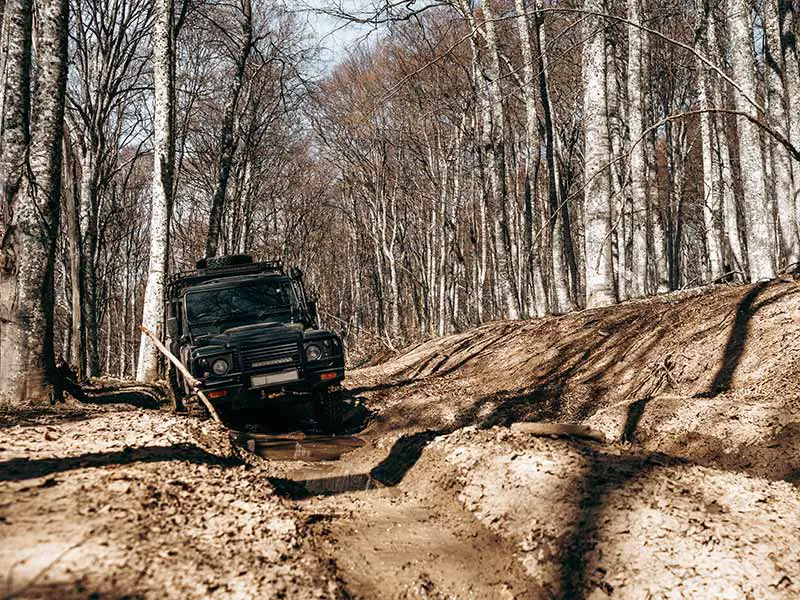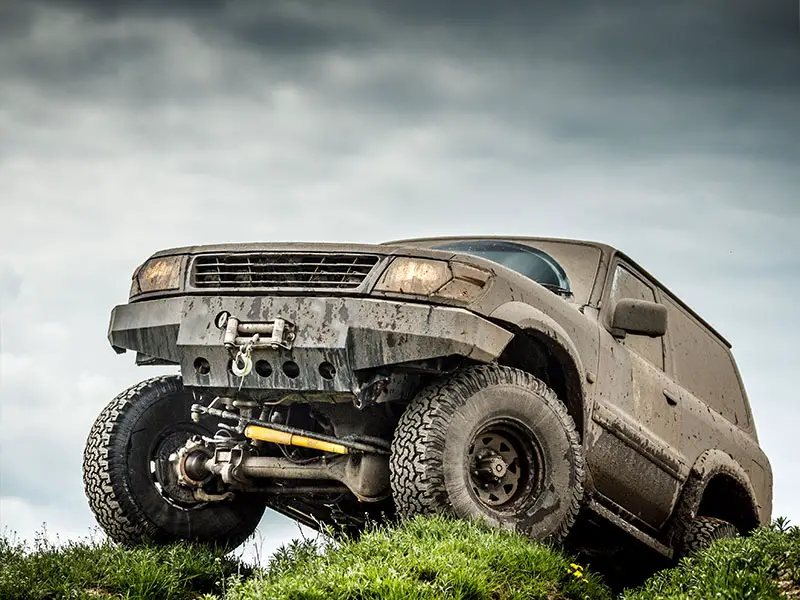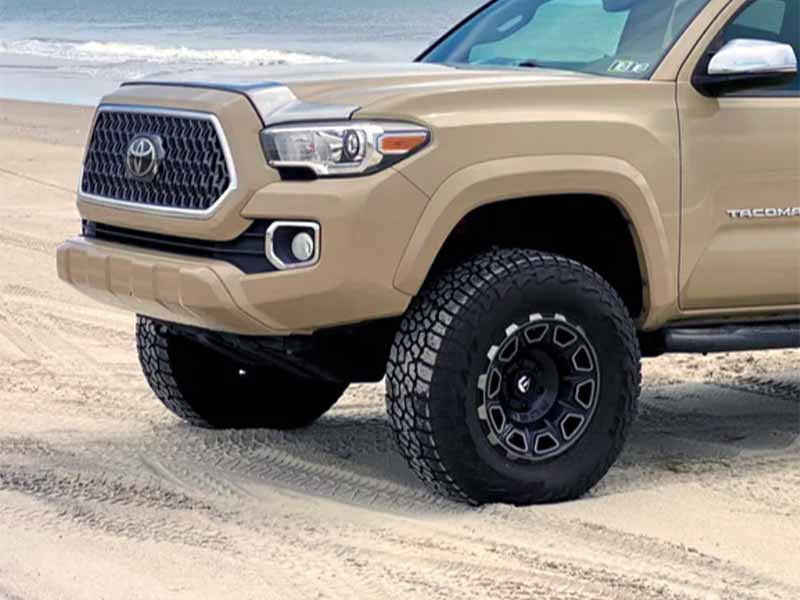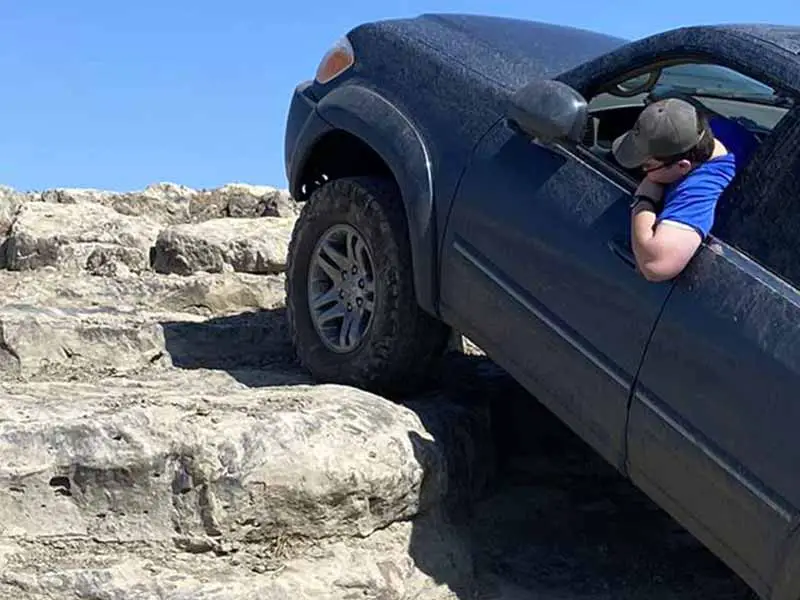When you’re gearing up for an off-road adventure in your Jeep, pickup, or 4Runner, the last thing you want is to be let down by your tires. The right load range can mean the difference between conquering the trail or being stuck in a rut.
If you’re curious about whether a Load Range C or E tire is the key to unlocking the full potential of your off-road experience, you’re in the right place.
Best Load Range For Off Roading
The best load range for off-roading depends on your vehicle’s weight and the terrain. Load Range C is better for lighter vehicles and softer terrains, while Load Range E is suited for heavier vehicles and rougher terrains.
In this article, we delve into the world of off-road tire load ranges, exploring the balance between durability and flexibility to help you make an informed decision for your off-road vehicle.

Understanding Load Range and Load Rating
When you’re gearing up for an off-road adventure, the tires beneath you are as crucial as the vehicle itself. “Load range” is a term that tells you how much weight your tire can handle, and it’s represented by letters like C or E.
Meanwhile, “load rating” is a number that corresponds to a specific weight capacity that the tire can carry. It’s vital to choose the right load range and rating because if you get it wrong, you could end up with a flat tire or worse when you’re out in the middle of nowhere.
Load Range: The Foundation
Load range indicates the tire’s capacity and its build, particularly the number of plies. Here’s a quick guide:
- Load Range C: These tires are built for lighter loads and typically have a 6-ply rating. This rating doesn’t mean there are six actual layers, but rather the tire is as strong as one with six layers would be. Check out our C Load Range article for a deep dive.
- Load Range E: These tires are for heavier-duty use with a 10-ply rating, meaning they’re built to handle more weight, which is crucial for carrying heavy gear or driving over rough terrain. Check out our E Load Range article for a deep dive.
Load Rating: Understanding the Numbers
The load rating is a number that you’ll find on the tire’s sidewall and in the vehicle’s manual, and it tells you how much weight the tire can safely support. It’s important to match this number with your vehicle’s requirements, especially for off-roading.
Selecting the Right Load Range for Off-Roading
In my experience, choosing the right load range for off-roading is about balance. You need a tire that can handle the load without being too rigid. Here’s my advice:
- For lighter off-road vehicles, like some Jeeps or a Toyota 4Runner, Load Range C tires are often sufficient. They strike a balance between strength and flexibility, which suits a variety of off-road scenarios.
- For heavier vehicles or more extreme conditions, like rock crawling or hauling heavy loads, Load Range E tires are typically the better option. They provide the robustness needed for such demanding situations.
Air Pressure and Load Range
Air pressure plays a pivotal role in tire performance. It’s not just about the load range; the amount of air you put in the tires is also crucial. Here’s a simple guideline I use:
- Increase air pressure for heavier loads to help the tire maintain its shape and durability.
- Decrease air pressure for lighter loads to improve the ride’s comfort and the tire’s grip.
| Load Range | Ply Rating | Typical Load Capacity | Max Load Carrying PSI |
| B | 4 | 1,100 to 1,520 lbs | @ 35 PSI |
| C | 6 | 1,760 to 2,270 lbs | @ 50 PSI |
| D | 8 | 2,205 to 3,000 lbs | @ 65 PSI |
| E | 10 | 2,470 to 3,415 lbs | @ 80 PSI |
| F | 12 | 3,500 to 3,960 lbs | @ 95 PSI |
| G | 14 | 3,960 to 4,400 lbs | @ 110 PSI |
| H | 16 | 4,805 to 5,675 lbs | @ 125 PSI |
| J | 18 | 6,005 to 6,610 lbs | @ 140 PSI |
| L | 20 | 7,000 to 7,800 lbs | @ 160 PSI |

Load Range C vs. Load Range E Tires in Off-Roading
When it comes to off-roading, the choice between Load Range C and Load Range E tires can make a significant difference in your vehicle’s performance. Let’s break down what each range means for your off-road experience.
Load Range C Tires for Off-Road
Load Range C tires are often preferred for vehicles that won’t be carrying heavy loads or tackling the most extreme terrains. They are built with a lighter construction, which provides several benefits:
- Improved Flexibility: These tires can flex more easily, conforming to the terrain, which can provide better traction on uneven surfaces.
- Comfortable Ride: With a softer ride, you’ll feel fewer bumps and jolts as you navigate through trails.
- Versatility: They are well-suited for a variety of off-road conditions, from gravel paths to muddy tracks.
For lighter off-road vehicles, such as some models of Jeeps and the Toyota 4Runner, Load Range C tires are often the right fit. They offer a balance that can enhance the off-roading experience without the stiffness of a higher load range tire.
Load Range E Tires for Off-Road
On the other side, Load Range E tires are designed for the heavy hitters of the off-road world. Here’s why you might choose them:
- Increased Durability: These tires can take a beating. With a stronger build, they can handle rougher terrain and heavier loads without as much wear and tear.
- Stability for Heavy Loads: If you’re packing heavy gear or have a larger, heavier vehicle, these tires provide the stability you need.
- Less Flex, More Protection: While they may not provide as soft a ride, the reduced flex means better protection against punctures and damage from rocks and other sharp objects.
For vehicles that are going to face more extreme conditions, like heavy-duty trucks or modified off-road vehicles that will be doing things like rock crawling, Load Range E tires are often the better choice. They are built to withstand the additional weight and stresses of such demanding activities.
Making the Right Choice
In my years of dealing with tires, I’ve seen many off-roaders face the dilemma of choosing between Load Range C and E. Here’s my take:
- Assess your vehicle’s weight and the type of off-roading you’ll be doing. If you’re generally on lighter trails and not carrying much weight, Load Range C could be your best bet.
- If you’re driving a heavier vehicle, like a full-sized truck, or if you’re planning on more extreme off-road conditions, then Load Range E is the way to go. It’s all about matching the tire to your specific situation.

The Optimal Load Range for Different Off-Road Activities
Selecting the right load range for your off-road activities is not just about the vehicle you drive; it’s also about the activities you plan to engage in.
Whether you’re cruising on a sandy beach or navigating through rocky terrain, the load range of your tires is pivotal to your vehicle’s performance and safety.
When to Choose Load Range C
Load Range C tires are typically suitable for:
- Lighter Off-Road Activities: Perfect for vehicles that are used for light trail driving or overlanding where extreme durability is not the primary concern.
- Vehicles with Lower Load Requirements: Ideal for lighter off-road vehicles or those not carrying significant additional weight in terms of gear or modifications.
- Improved Off-Road Ride Quality: These tires can offer a more comfortable ride on uneven terrain due to their increased ability to flex.
For those who enjoy a variety of off-road experiences without the need for heavy-duty equipment, Load Range C tires can provide the necessary performance without the added stiffness of higher load range tires.
When Load Range E is the Better Choice
Conversely, Load Range E tires are often the preferred option for:
- Heavy-Duty Off-Road Use: Essential for vehicles that are subjected to the toughest off-road conditions, such as extreme rock crawling or traversing through deep mud.
- Carrying Heavy Loads: If you’re hauling heavy gear, E rated tires offer the necessary support and stability.
- Larger, Heavier Vehicles: Bigger vehicles, especially those that have been modified for off-road use, will benefit from the robust construction of E rated tires.
For off-roaders who demand the most from their vehicles and tackle the most challenging environments, the strength and durability of E rated tires are often non-negotiable.
Decision-Making Based on Vehicle Type and Terrain
When I’m advising on tire selection, I always consider the type of vehicle and the terrain it will encounter. Here’s what I typically recommend:
- For Light to Medium Terrain: If your off-road adventures are on relatively forgiving terrains, such as dirt roads or light trails, C rated tires are often sufficient.
- For Harsh Terrain: When the terrain gets tough, and you’re looking at steep, rocky inclines or potentially tire-damaging obstacles, E rated tires are the safer bet.
Resources
Below are some links you may find helpful when learning about tires:
Final Thoughts
Load Range C tires offer flexibility and a smoother ride for lighter vehicles and less demanding terrains, making them suitable for many Jeeps and SUVs like the 4Runner.
On the other hand, Load Range E tires provide the durability and stability needed for heavier pickups and more extreme off-road conditions.
Remember, it’s not just about the tire’s ability to carry weight—it’s also about how it handles the challenges of off-roading. Consider your vehicle, the terrain, and the type of off-roading you’ll be doing to make the best choice.
Good luck and happy motoring.





